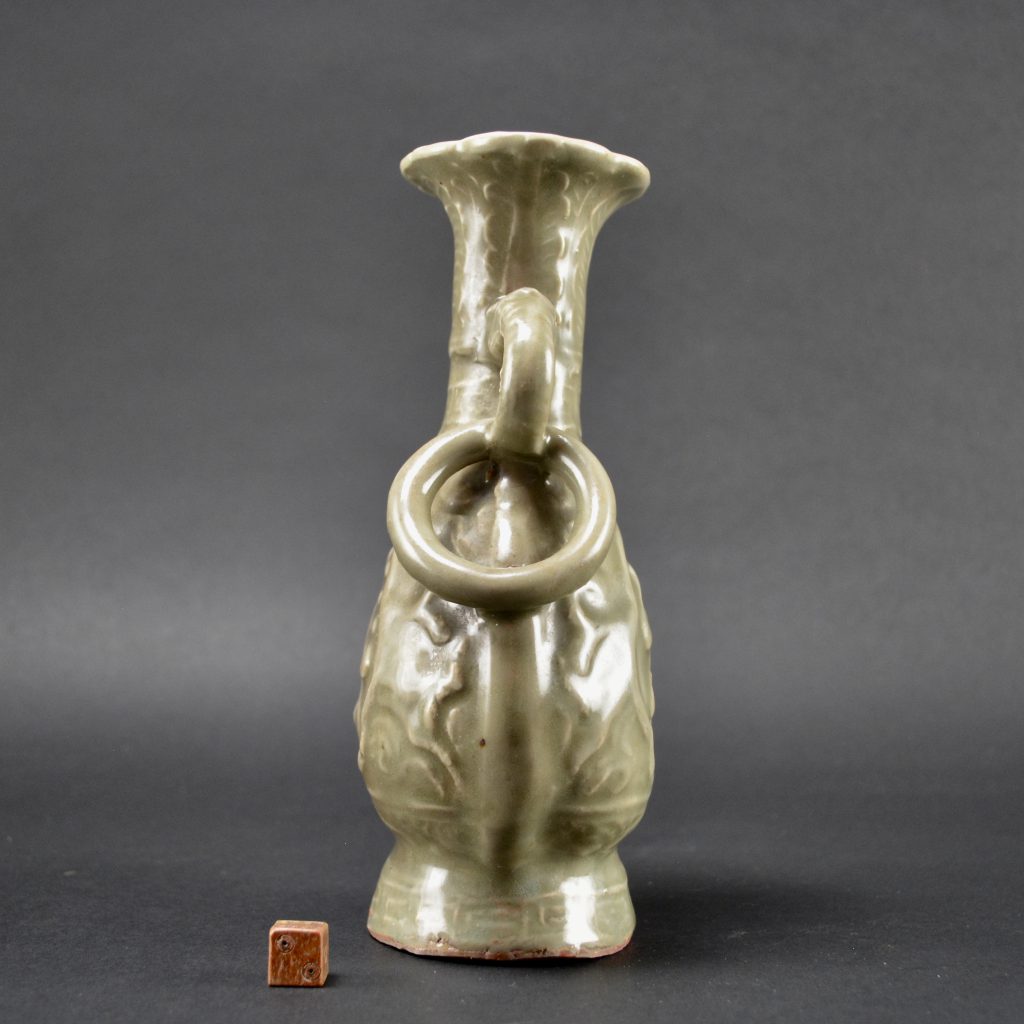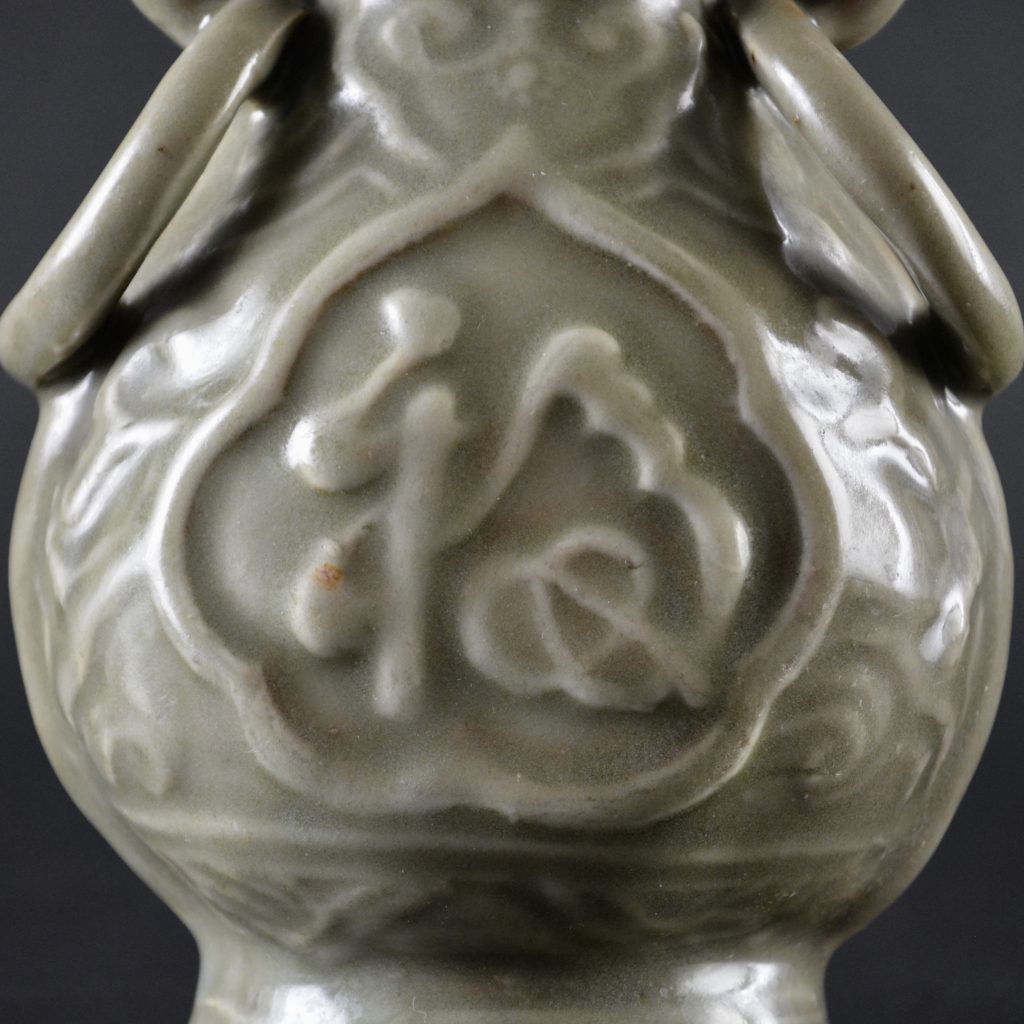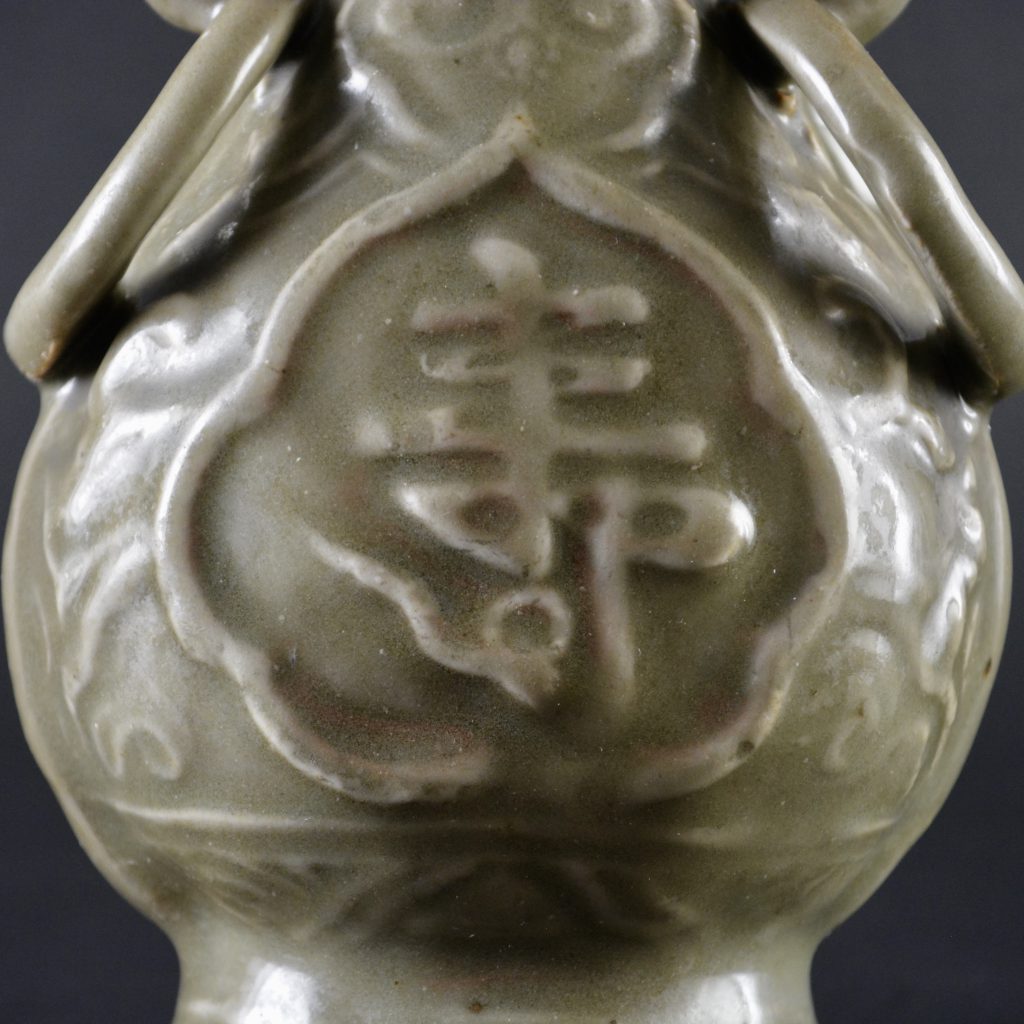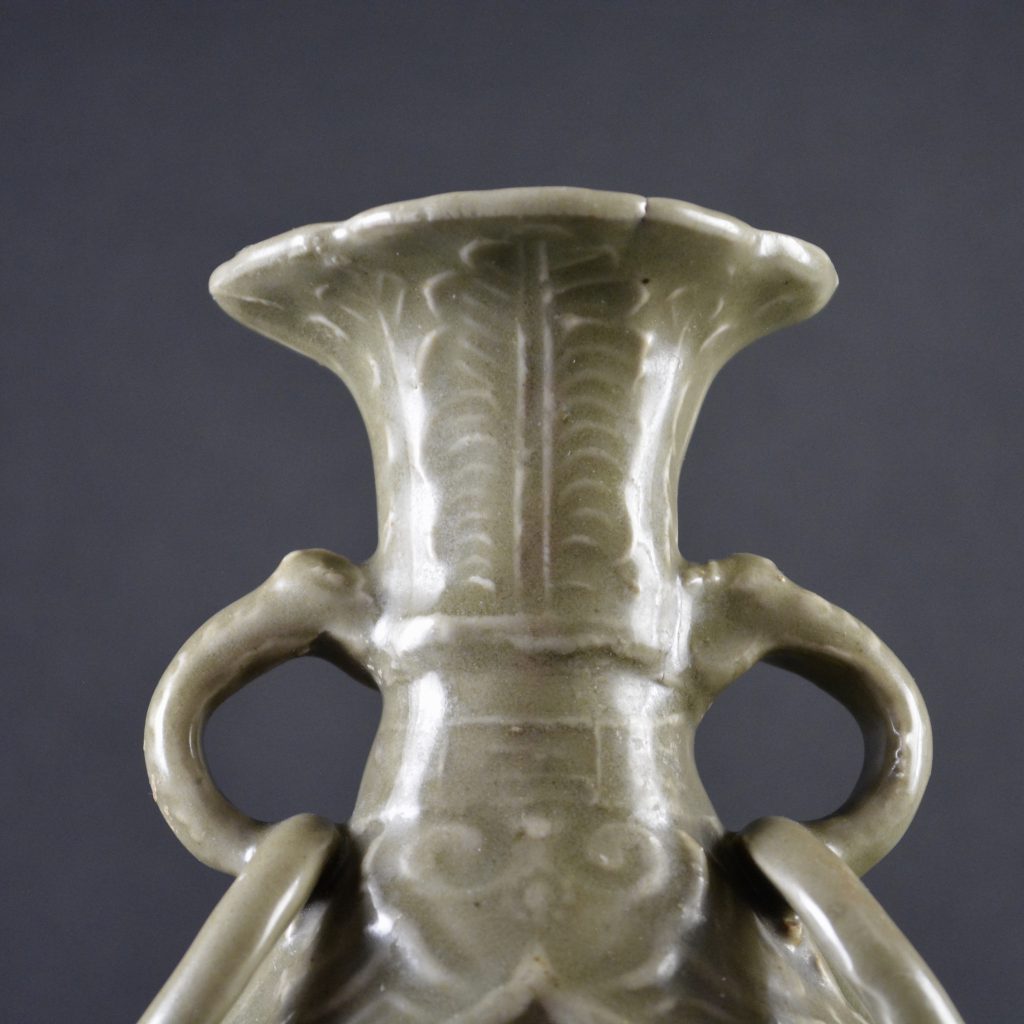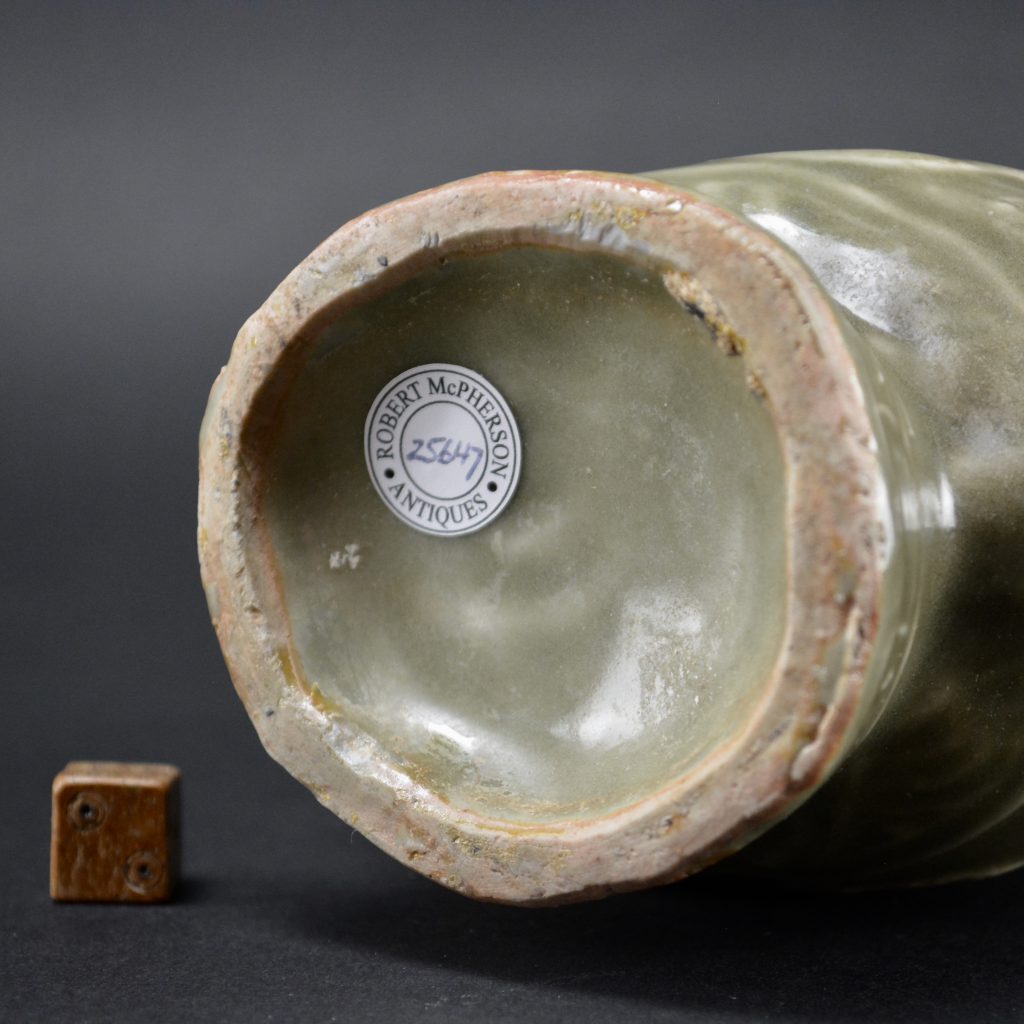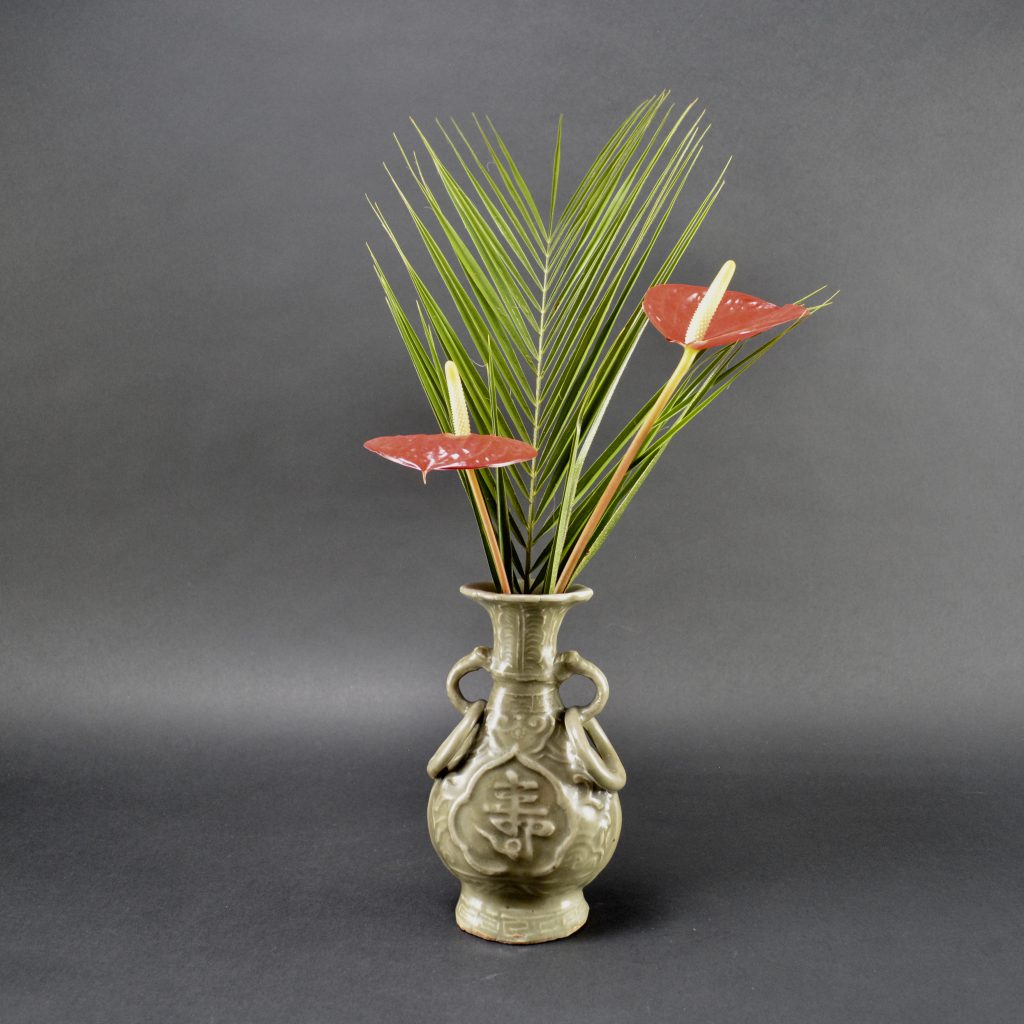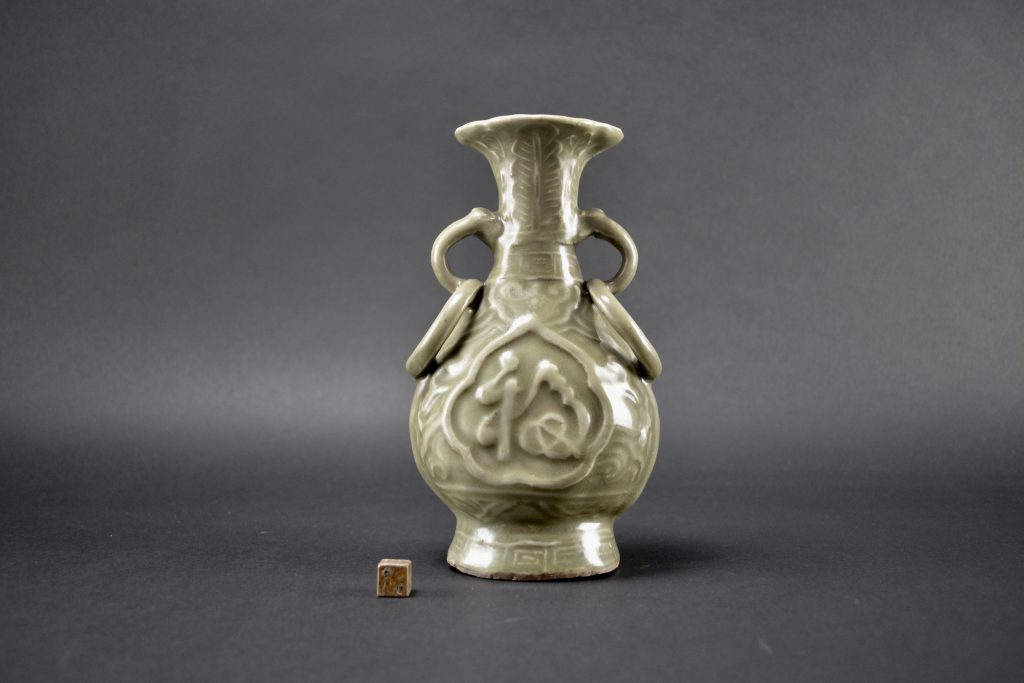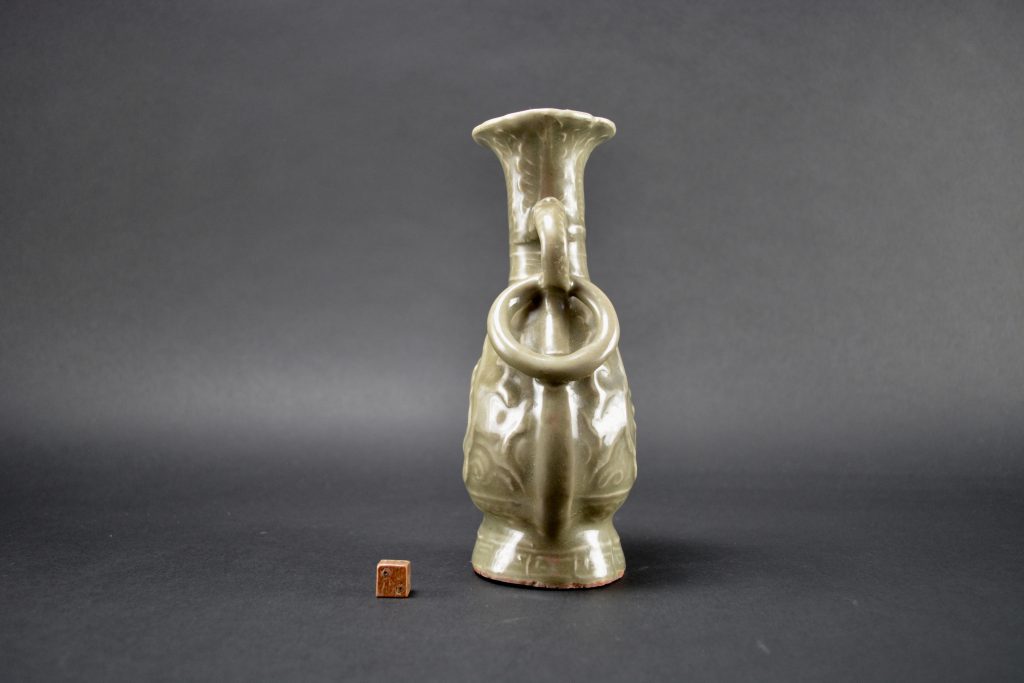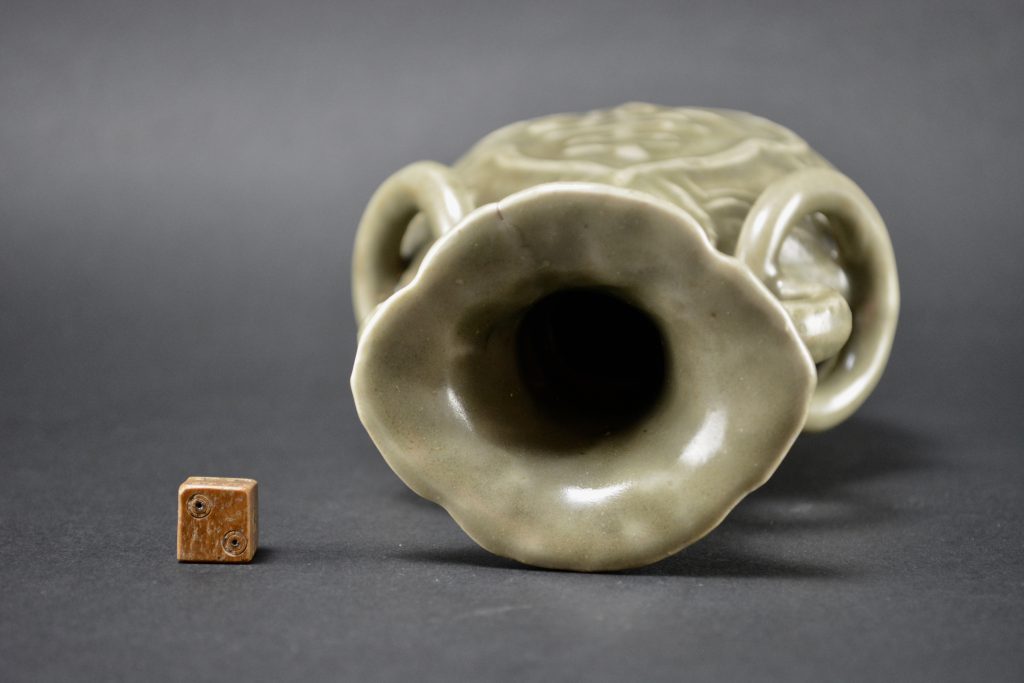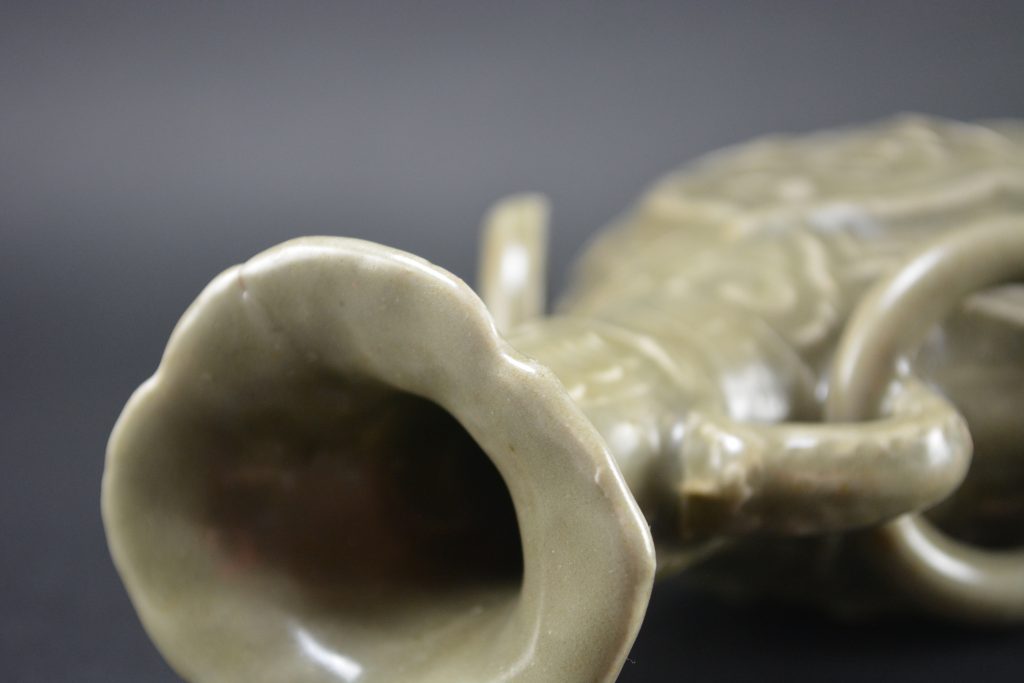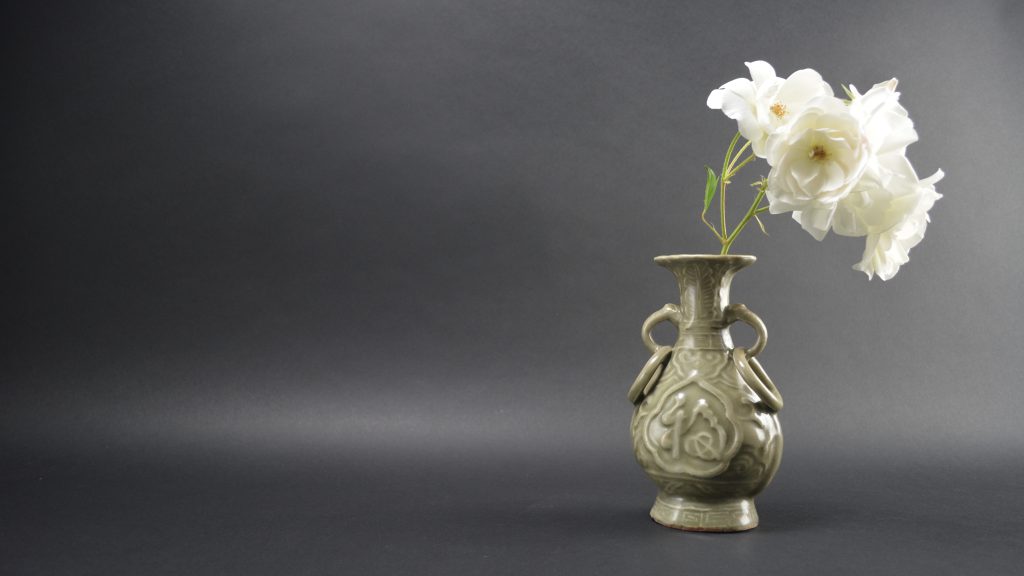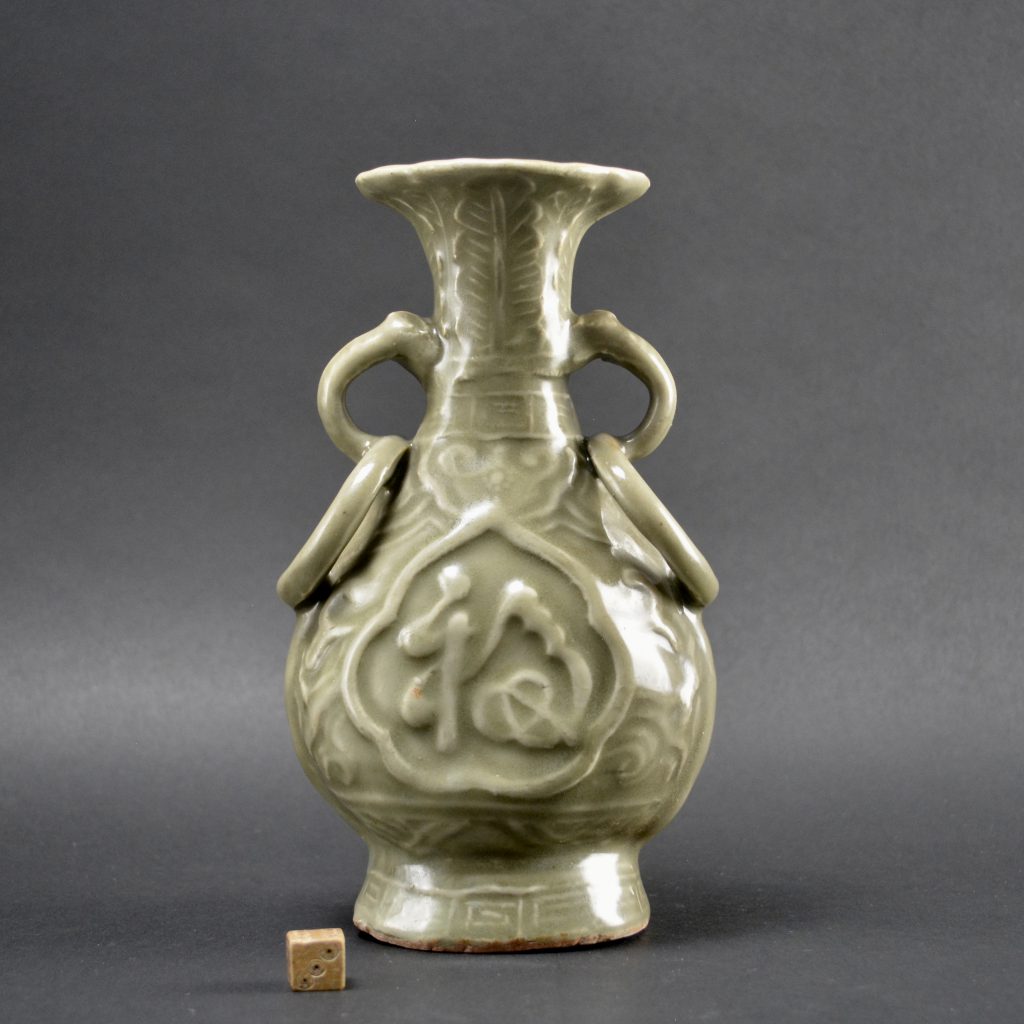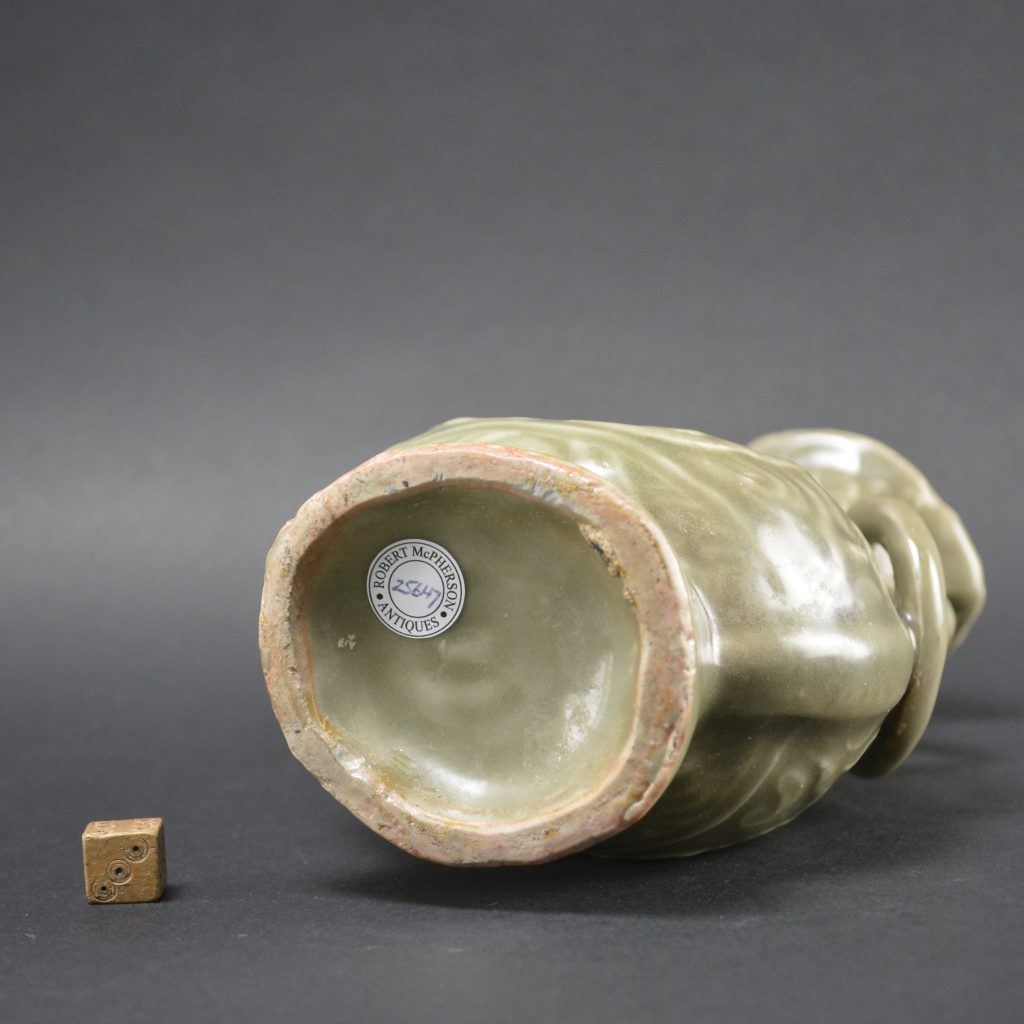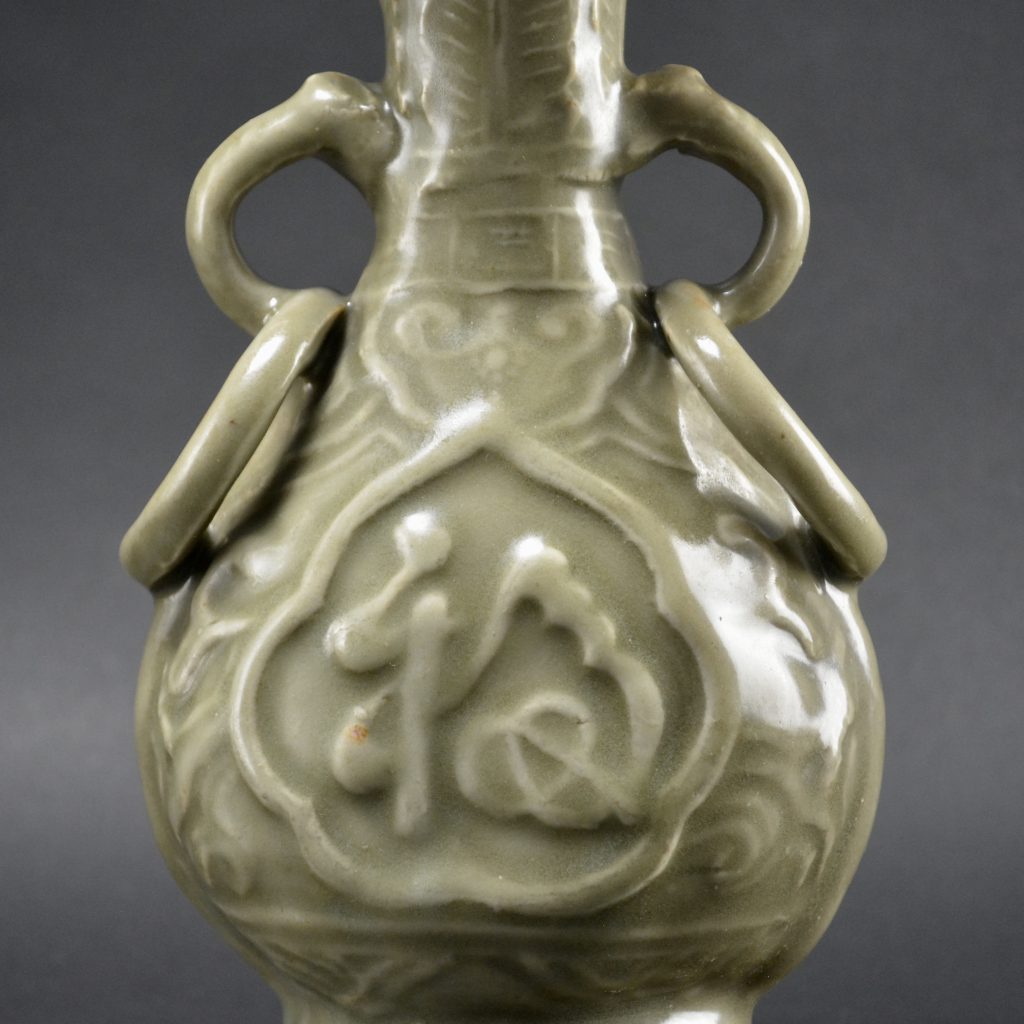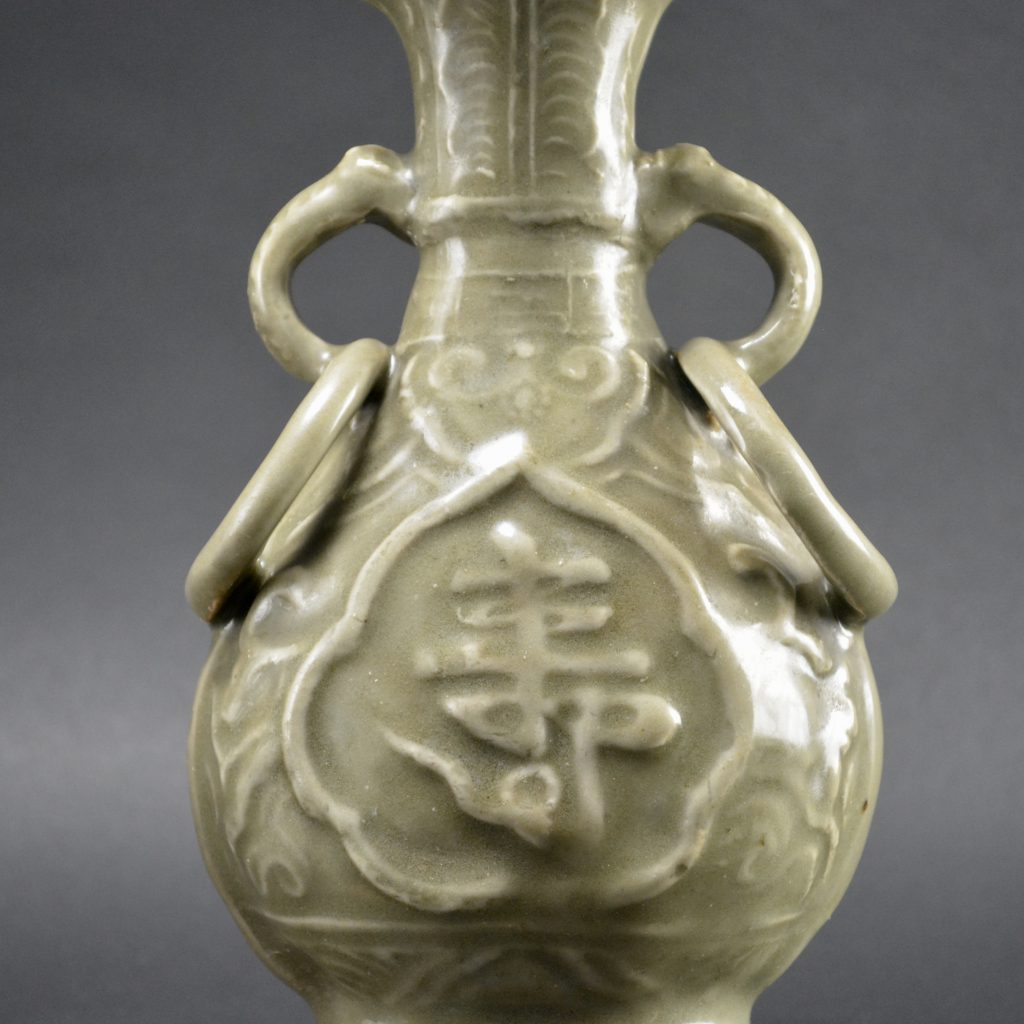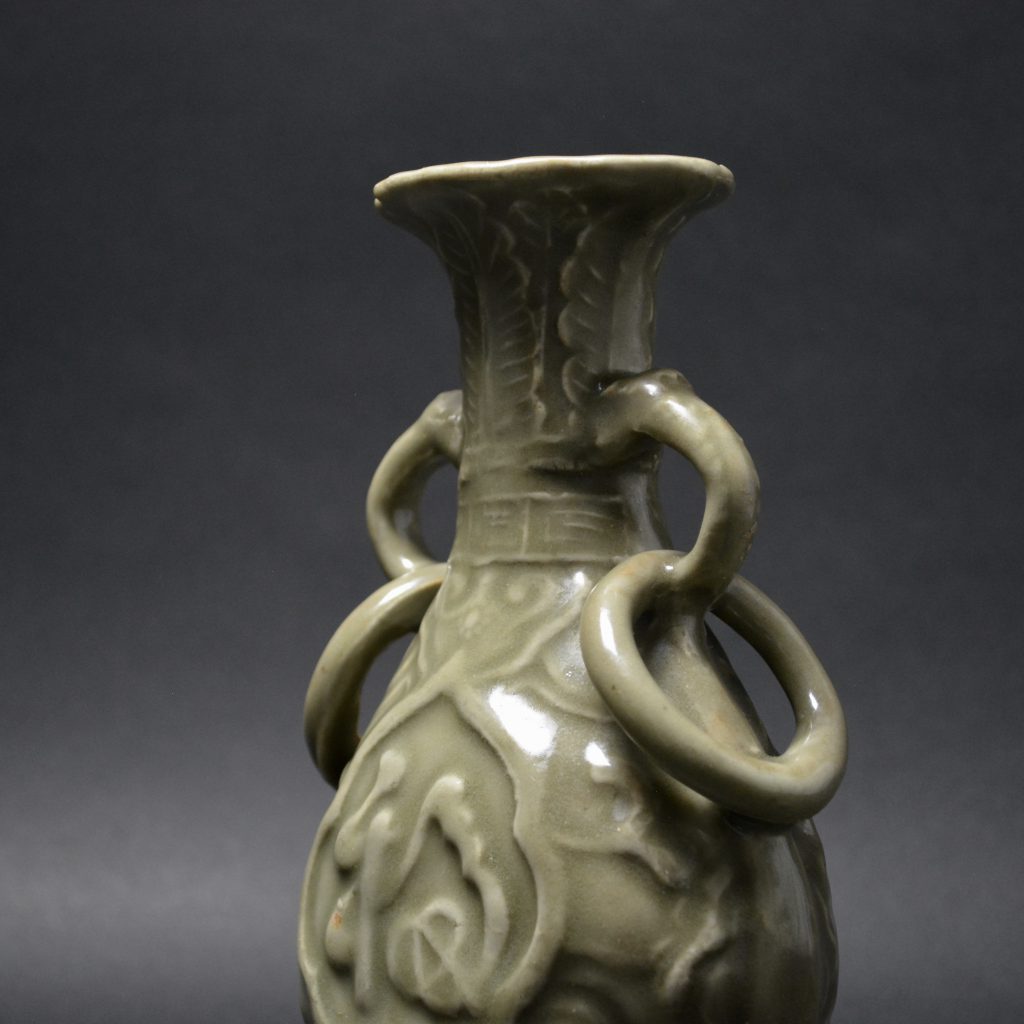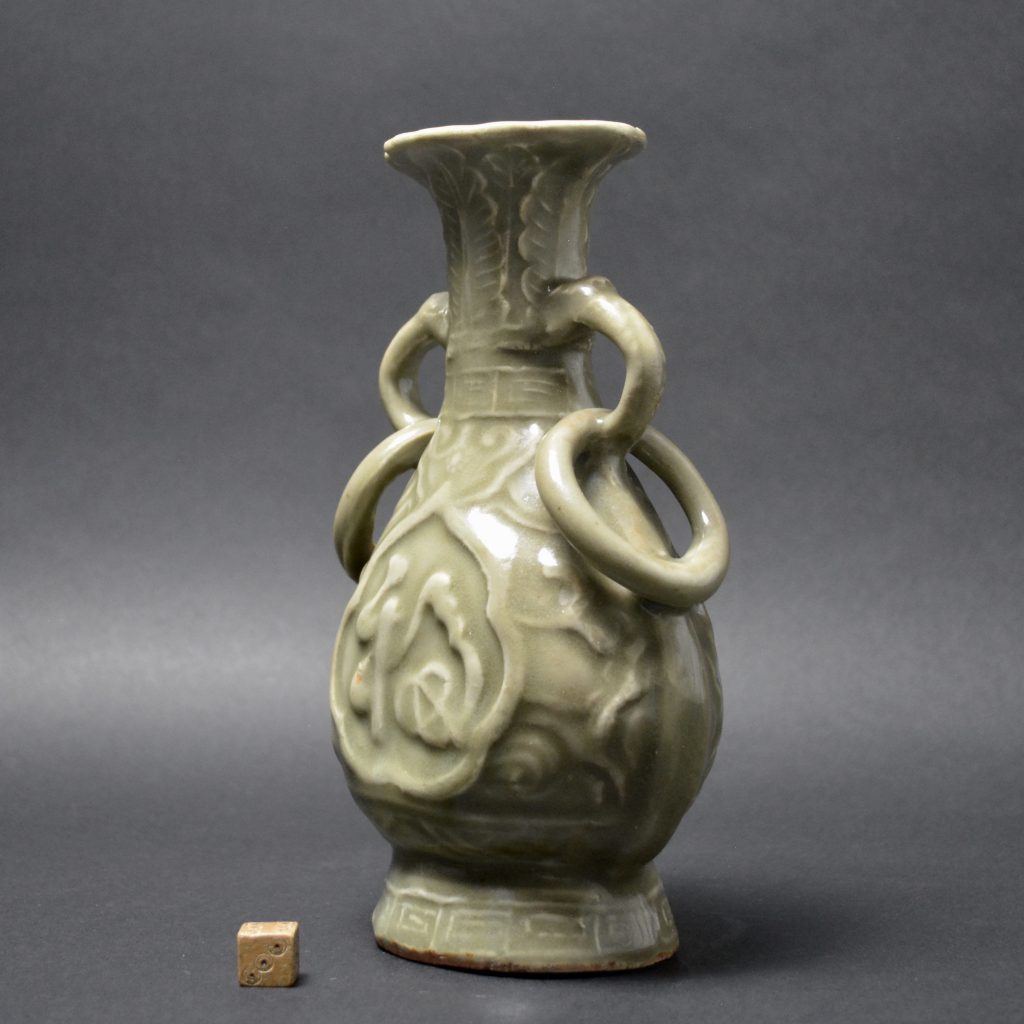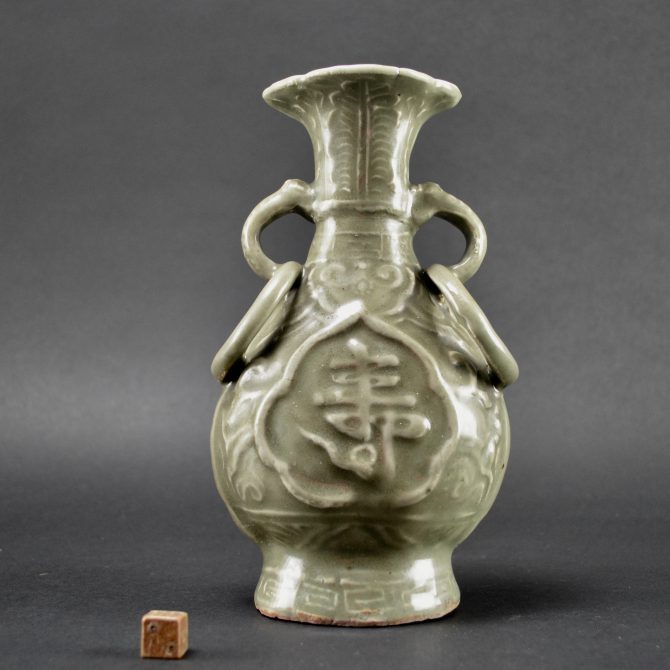
A Ming Celadon Vase
A Ming Celadon Vase, Longquan Kilns c.1450-1550. The flattened pear-shaped vase is based on a Ming bronze proto-type. The thin pertruding elephant form handles support large loops, these would have been loose on the bronze originals. One side has a panel with a Shou character to the center, meaning longevity, the other Fu meaning luck. The neck is decorated with a panel of stiff-leaves.
SOLD
- Condition
- In excellent condition, very minor signs of burial. Firing fault - a small fracture to the rim.
- Size
- Height 19.5cm (7 2/3 inches).
- Provenance
- N/A
- Stock number
- 25647
- References
- For a closely related Ming celadon vase see : Chinese Celadons And Other Related Wares In Southeast Asia (Southeast Asian Ceramic Society, Singapore. Arts Orientalis, Singapore.1979) page 252, plate 248. Two other vase are in the British Museum, see below : British Museum 1929,0722.8 and a poor quality version 1931,1118.5.
Information
Two Related Ming Celadon Vases
at the British Museum
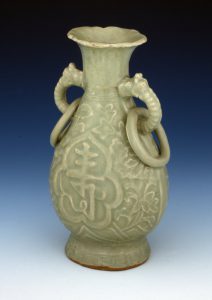
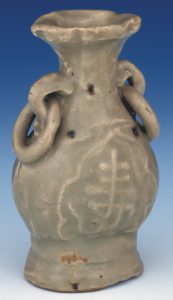
Celadon Ware :
Celadon is a term used to describe several types of Chinese stoneware and porcelain, as well a ceramics from other countries, notably from Korea and Japan. The term is a imprecise one, applying to various types of green glazed ceramics, but not all ceramics with green glazes, there are several wares that have a green glaze that are not refereed to as celadon. For example Green Jun and Ge Ware. For this reason there has been a move to try to clarify the situation by using the term `Green Ware`. But for now Celadon is a more familiar and therefore useful term. The origins of the term Celadon are not clear, one theory is that the term first appeared in France in the 17th century and that it is named after the shepherd Celadon in Honoré d`Urfé`s French pastoral romance, L`Astrée (1627), who wore pale green ribbons. (D`Urfe, in turn, borrowed his character from Ovid`s Metamorphoses.) Another theory is that the term is a corruption of the name of Saladin, the Ayyubid Sultan, who in 1171 sent forty pieces of the ceramic to Nur ad-Din, Sultan of Syria. Yet a third theory is that the word derives from the Sanskrit sila and dhara, which mean “stone” and “green” respectively. Celadon ware originated in Zhejiang Province in the Eastern Han Dynasty, however green monochrome glazes can be found on stoneware much before that date. Zhejiang is were the famous Longquan Celadons were made but Celadon wares were also produced at Jiangsu, Hubei, Hunan and Jiangxi. The production of Celadon Ware required a reducing atmosphere of around 1300 degrees C., the colouring agent was a mixture of iron oxide and titanium. The glaze was applied very thickly, and was full of tiny bubbles which defuse the light giving the appearance of richness and softness. Celadon ware originated in Zhejiang Province in the Eastern Han Dynasty, however green monochrome glazes can be found on stoneware much before that date. Zhejiang is were the famous Longquan Celadons were made but Celadon wares were also produced at Jiangsu, Hubei, Hunan and Jiangxi. The production of Celadon Ware required a reducing atmosphere of around 1300 degrees C., the colouring agent was a mixture of iron oxide and titanium. The glaze was applied very thickly, and was full of tiny bubbles which defuse the light giving the appearance of richness and softness.
